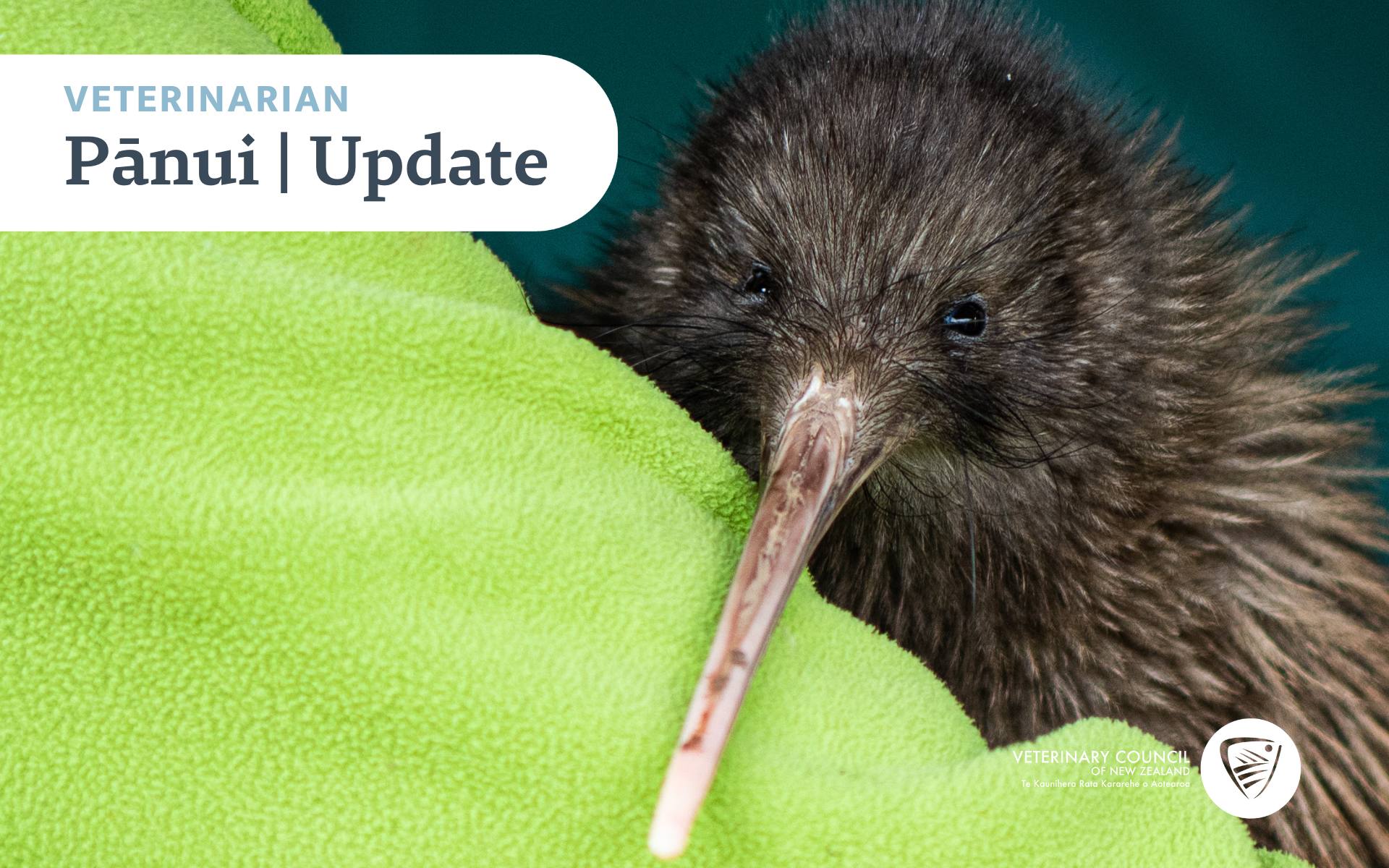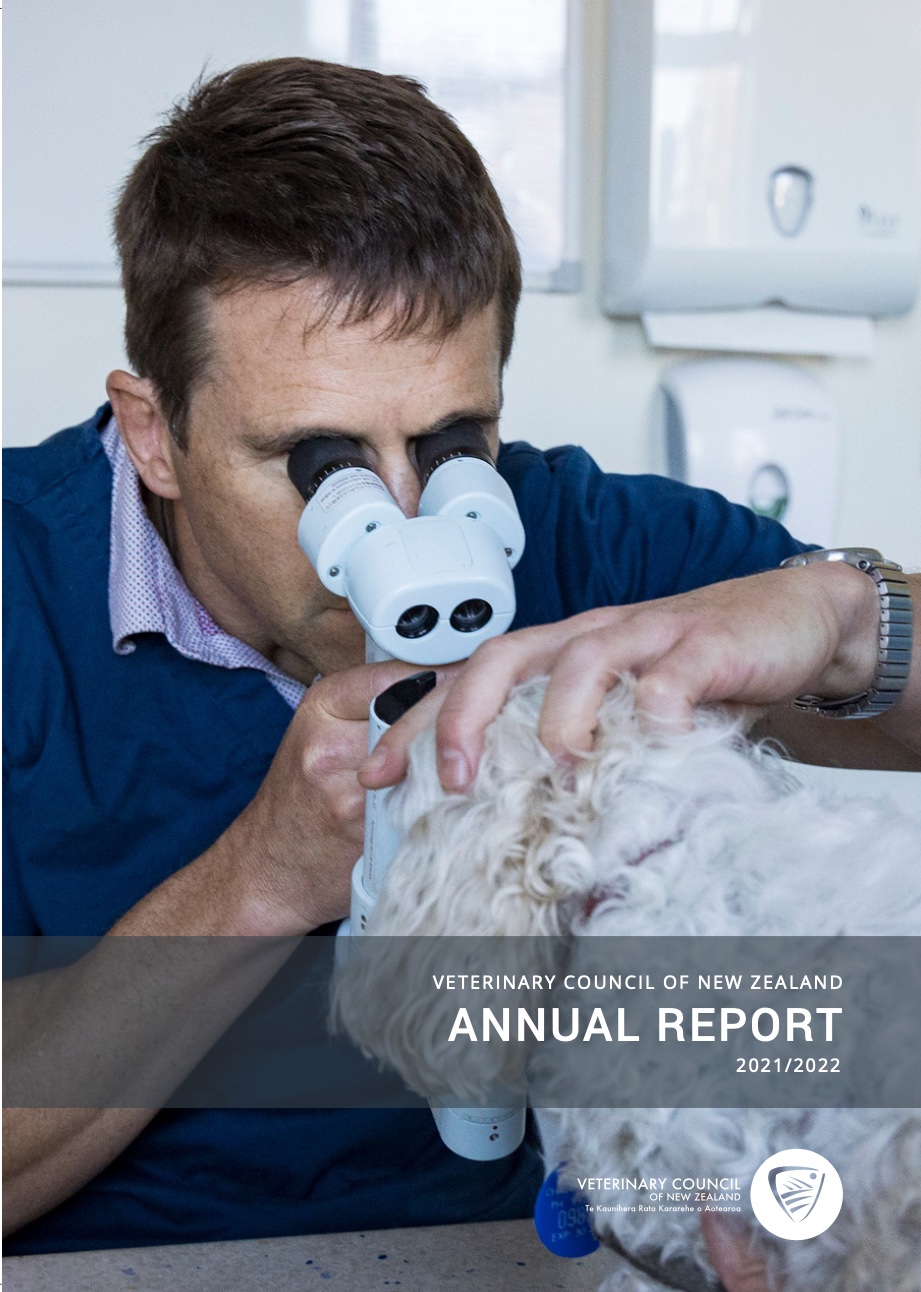
Pānui | Update March 2023
Welcome to our March update. In this edition, we share a correction to our ”Authorising Controlled Drugs for use by non-veterinarians” guidance, as well as recent changes to penicillin product withholding periods. There is an upcoming AMR audit being conducted by MPI, which we have included details about, and a link to view the VCNZ Annual Report for the 21-22 year.
We have also shared an interesting article from Wormwise which examines the impact of recent flooding on worm management and offers some helpful advice.
DCAT Statement webinar Thursday
The Veterinary Council of New Zealand (VCNZ) and the Dairy Cattle Veterinarians (DCV) branch of the NZVA are running a webinar to discuss the recent VCNZ Statement on the Authorisation of Dry Cow Therapy.
Date: Thursday 30 March 2023
Time: 3:30–4:30pm
Link to join: https://us02web.zoom.us/j/87901918885?pwd=VHgrNW9uaVFPWU9TS0VBc1BMUGVKdz09
DCAT Guidance
Based on feedback from the profession, VCNZ and DCV have put together guidance to address concerns and questions about our DCAT statement , including scenarios and recommendations on how to use the published information to address common and practical prescribing concerns.
Read the Guidance
Correction
Please note that the period of supply for Controlled Drugs in the original “Authorising Controlled Drugs for use by non-veterinarians” guidance was quoted in error as three months, and now reads:
The Misuse of Drugs Regulations 1977 specify a maximum period of supply of one month and leaves management of the risks to the veterinarian’s judgement.
Please update your systems and advise your colleagues of this amendment.
Changes to penicillin product withholding periods
As part of the Ministry for Primary Industries and Agricultural Compounds and Veterinary Medicines (ACVM) antimicrobial resistance reassessment review, pharmaceutical companies have been asked to review and update their labels regarding appropriate dose rates for clinical disease indications, where penicillin is an antimicrobial of choice.
The most common change has been an increase in dose rate. The higher levels of antibiotic being administered means that withholding periods (WHP) need to be adjusted to ensure maximum residue levels (MRLs) are being complied with.
MPI has created a table of the 69 penicillin products that lists dose rates and WHPs, and highlights any changes. There is also a set of FAQs which we encourage you to read and share amongst your team.
Details about the review can be found here .
Information on AMR Slice of Life Audit March
Antimicrobial resistance (AMR) is one of the top ten global health threats.
The recent release of the Office of the Prime Minister’s Chief Science Advisor’s report ‘Kotahitanga Uniting Aotearoa against infectious disease and antimicrobial resistance’ has highlighted the need for the Ministry for Primary Industries (MPI) to gain a better understanding of AMR and identify the areas in which the management of AMR risks can be improved.
The Ministry for Primary Industries (MPI) Systems Audit Team (SAT) and the Antimicrobial Resistance Team are planning an audit of the supply and use of antibiotics in the animal and plant health sectors. This is a national audit where a selection of relevant primary industry parties will be visited, including (but not limited to):
- registered veterinary medicine sellers
- dairy companies
- farms
- veterinarians – production animal and companion animal
- fruit growers and contractors,
- agricultural chemical distributors
- animal health laboratories.
The audit will look at how antibiotics are used, including application/administration, storage, transport, and disposal of trade name products. It will also look at trends in quantities of antibiotics used over time. MPI will explore the work being undertaken in the area of disease prevention and control, such as vaccination programmes and use of biologicals in the plant sector.
The audit will enable MPI to understand how current activities in the sectors may affect AMR development. The aim is to identify best practices in AMR mitigation, and determine key areas that need to be addressed.
The initial AMR audit is planned to take place from 27 March until 30 June.

VCNZ Annual Report
VCNZ is pleased to present its Annual Report on our work for the year ended 31 March 2022. The Report has been presented to the Minister of Agriculture and is now available to view on our website .
Messages from others
The items below come from other organisations. We have agreed to share them with veterinarians because they may be of interest. If you have any questions or concerns about them, please contact the organisation directly.
Post-cyclone worm management thoughts
By Ginny Dodunski BVSc MACVSc (Med. Sheep) – Wormwise Programme Manager
This article is due to be released in Country Wide Magazine in April.
In ‘normal’ times, when looking at on-farm worm management, there are two broad areas where we can have influence:
- The overall farm system – things that impact the ability to manage worms including stocking rate, ability to ration and manage feed, key feed demand dates, forage types, balance of animal species and balance of younger and older stock.
- The tactical aspects – aspects include drenching and monitoring programmes, use of different forage types, integration of stock classes, planning of grazing rotations and area swaps.
When your property has been badly impacted by a weather event, the level of control over many of these is greatly diminished. This could be as big as being unable to keep ewes and rams apart and losing control over lambing dates, or as small as having to wait an extra week to get some lamb drench delivered.
Recovery from these events can also raise some interesting questions about worm management on affected areas – such as, ‘How much flooding is required to wash worms away?’, ‘When I re-grass my silted flats, will the resistant worms down there be gone?’ and ‘Will my stock be more likely to get liver fluke if my paddocks have been flooded?’.
When looking at the big picture of animal management in the face of cyclone recovery, the priority has to be on the health and welfare of the stock. In these times, it may be that lack of control over the farm system dictates worm management decisions that are not strictly ‘Wormwise’.
Examples of this in the coming months may be:
- Ewes over tupping:
- Typically, we would advise a best-practice split flock monitoring and management approach to avoid the need for whole-flock (or indeed, any) drenching pre-tup in areas where Barbers Pole worm is a risk.
- However, this may be completely impossible on some farms this autumn, where ewes and lambs have become mixed up; where it’s not possible to separate light and heavy ewes; or if feed starts to run short ahead of mating because of area restriction or lack of control, it may be entirely justifiable to do a whole-flock Barbers Pole worm treatment.
- Routine lamb treatments:
- Where there is lack of grazing control and inability to access yard animals easily for routine treatments, there may be an argument for a long-acting treatment to keep lambs safe until it’s possible to easily handle them again.
- Be aware in this situation if you’re using a long-acting Moxidectin injection, that these products have differing lengths of protection against the different parasite species. For example, the protection period from these products against (non-resistant) Trichostrongylus is about 5-6 weeks, not 100 days.
- Ewes pre-lamb:
- Lack of grazing control in the autumn can result in suboptimal feed levels going into winter and/or feed quality issues that impact what ewes are eating through winter, and the regrowth of paddocks that got out of control.
- A subsequent heavy rain event through winter (as we saw in Manawatū in 2004) could move more sodden ground and further affect the ability to control grazing rotations.
- An outcome of both of the above is the possibility of lower than optimal feed levels at lambing.
- Keeping this in mind, taking a conservative approach to the feed budget, and prioritising feed to the ewe flock on hill country farms, are a must.
- However if, as lambing approaches, it has not been possible to manage feed to have good covers coming under the multiple ewes, use of long acting drench products (that would not normally be recommended) may be justifiable.
If, as a result of the cyclone, you’ve had to take preventive actions against worms that aren’t particularly ‘Wormwise’, I have two bits of advice.
Firstly; don’t beat yourself up. It’s unlikely that actions taken in one year in isolation are going to completely mess up the worm situation or drench resistance status of your farm. Secondly, where you have had to ‘break the rules’, have a think about what mitigations you might use to reduce the impacts.
In the case of treating a lot of ewes with a long-acting product pre-lamb; could you leave some better conditioned untreated ewes amongst the treated ones to provide some refugia? Or is it simpler to lamb untreated singles in with twins? Especially if you’ve lost the ability to differentially feed them anyway.
The risk from long-acting products is that they let resistant parasites survive and reproduce for a long period inside the ewes. If you do treat ewes this way, do some FEC monitoring (e.g. at docking) to ascertain how badly this is happening in your case. Then you can have a conversation with your vet about whether to use something to remove those.
On to those ‘curly flood questions’…
1 ‘How much flooding is required to wash worms away?’
To paraphrase Massey parasitologist Ian Scott; ‘worms are essentially aquatic organisms’ – after all, the worm larvae your stock ingest are suspended in the water droplets on your pastures. It would be a stretch to imagine that anything but the fastest flowing flood waters would physically wash all the larvae out of the sward. So presume the larvae will still be there, unless they’ve been buried under silt.
2 ‘When I re-grass my silted flats, will the resistant worms be gone?’
Probably yes, if the original pasture sward was well buried. Management is the same as for any re-grassing programme – be careful of the status of the worms you first introduce onto those areas. A couple of light grazes with undrenched adult stock are ideal.
3 ‘Will my stock be more likely to get liver fluke if my paddocks have been flooded?’
Fluke can be more of a risk (if they are present) in environments where there are substantial areas of ponded water. However in most New Zealand areas, the big fluke years tend to come after droughts, where stock have been grazing down hard into swampy areas to get the last bits of green.
Thankfully this time, in most of the cyclone affected areas, feed was plentiful prior to the flooding, so fluke should be less of a risk. That said, tail end ewes are typically the best class of ‘indicator’ stock for fluke challenge. If post-mortems on these reveal no fluke, you can be pretty confident that the rest of your stock are unaffected.